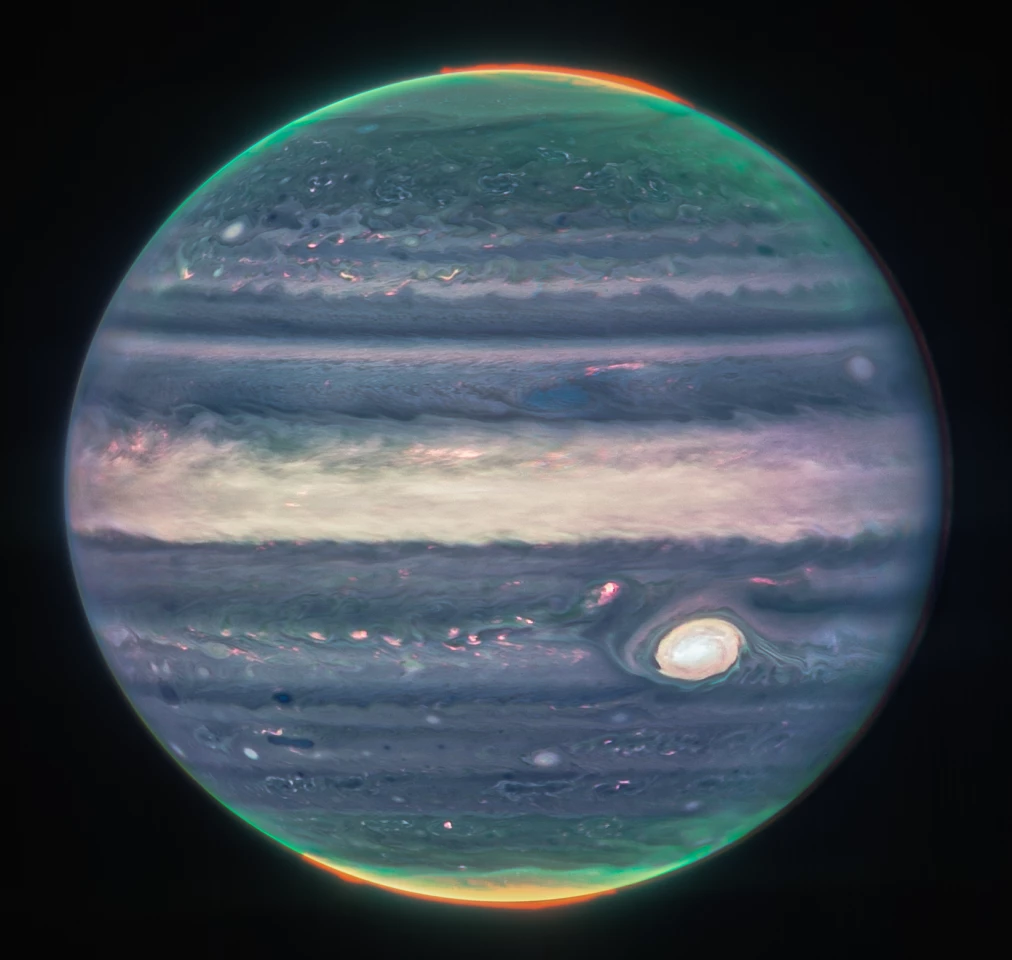The James Webb Telescope has provided another mesmerizing perspective of the universe, this time turning its near-infrared camera on a target much closer to home. The instrument's imagery of Jupiter presents an awe-inspiring look at the gas giant, and reveal its array of hazy auroras and rings in incredible new detail.
It was only last month that images began to arrive from the James Webb Space Telescope, but it didn't take long for the next-generation instrument to start proving its worth. Comparisons with imagery from its predecessor, the Hubble Space Telescope, clearly demonstrated its vast potential, while a new perspective on the chaotic Cartwheel Galaxy earlier this month continued to drive the point home.

The new images of Jupiter were processed by citizen scientist Judy Schmidt and come via James Webb's onboard Near-Infrared Camera, which carries three filters that enable it to capture different wavelengths of light and reveal different features of the planet. In the composite image above, Jupiter's vivid auroras are mapped to redder colors, while the yellows and greens reveal the hazes swirling around the north and south poles. A third filter, meanwhile, highlights the light bouncing off the planet's deeper, primary cloud in blue, and the planet's Great Red Spot can be seen in white.
“The brightness here indicates high altitude – so the Great Red Spot has high-altitude hazes, as does the equatorial region,” said Heidi Hammel, Webb interdisciplinary scientist for solar system observations. “The numerous bright white ‘spots’ and ‘streaks’ are likely very high-altitude cloud tops of condensed convective storms.”

In the wide-field view at the top of the page and labeled directly above, the composite image is formed from orange and cyan filters and reveals Jupiter's rings, which are a million times fainter than the planet, along with two minuscule moons called Amalthea and Adrastea. The blurry dots in the background, meanwhile, are believed to be galaxies far off in the distance.
“We hadn’t really expected it to be this good, to be honest,” said planetary astronomer Imke de Pater, professor emerita of the University of California, Berkeley, who led the observations as part of an international collaboration for Webb’s Early Release Science program.“It’s really remarkable that we can see details on Jupiter together with its rings, tiny satellites, and even galaxies in one image."
Scientists are now working to analyze the new data gleaned through these images to better understand the makeup of Jupiter and its glorious features.
Source: NASA






